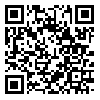Volume 15, Issue 5 (Sep & Oct 2025)
J Research Health 2025, 15(5): 483-492 |
Back to browse issues page
Download citation:
BibTeX | RIS | EndNote | Medlars | ProCite | Reference Manager | RefWorks
Send citation to:



BibTeX | RIS | EndNote | Medlars | ProCite | Reference Manager | RefWorks
Send citation to:
Beheshti M H, Borhani Jebeli M, Ghasemian M, Tabrizi A. Innovative Ergonomic Solutions for Saffron Flower Processing: Design of Ergonomic Table. J Research Health 2025; 15 (5) :483-492
URL: http://jrh.gmu.ac.ir/article-1-2650-en.html
URL: http://jrh.gmu.ac.ir/article-1-2650-en.html
1- Department of Occupational Health and Safety Engineering, Faculty of Health, Social Determinants of Health Research Center, Gonabad University of Medical Sciences, Gonabad, Iran.
2- Department of Occupational Health, School of Health, Torbat Heydarieh University of Medical Sciences, Torbat Heydarieh, Iran.
3- Department of Occupational Health, School of Health, Iran University of Medical Sciences, Tehran, Iran.
4- Student Research Committee, Department of Occupational Health and Safety Engineering, School of Public Health and Safety, Shahid Beheshti University of Medical Sciences, Tehran, Iran. ,tabrizi9@gmail.com
2- Department of Occupational Health, School of Health, Torbat Heydarieh University of Medical Sciences, Torbat Heydarieh, Iran.
3- Department of Occupational Health, School of Health, Iran University of Medical Sciences, Tehran, Iran.
4- Student Research Committee, Department of Occupational Health and Safety Engineering, School of Public Health and Safety, Shahid Beheshti University of Medical Sciences, Tehran, Iran. ,
Abstract: (445 Views)
Background: Musculoskeletal disorders (MSDs) are a significant public health concern that can greatly affect individuals’ health and well-being. Since Iran is a significant producer and exporter of saffron, with many workers engaged in this industry, the study aimed to design an ergonomic table for saffron flower processing to reduce MSDs, like back pain.
Methods: In this experimental study, the design process involved brainstorming and group meetings with 10 experts and ergonomics students, using anthropometric data from Iranian workers aged 20 to 60. The table was created using Rhino Software, version 6.
Results: The saffron flower processing table was designed ergonomically with the capability of rotation and height adjustment. For each component of the saffron processing process, a specific place was designated on this table, and these designated areas were determined according to the reach of individuals. The table’s height ranged from 76 to 87 cm, with a total cross-section of, 6645 square cm.
Conclusion: The limitations of this study included the inability to generalize the results to other countries and different age ranges, as the anthropometric data of Iranian workers aged 20 to 60 years were utilized. An ergonomic solution that works well in one country may lead to an increase in MSDs in another country due to different body dimensions. While some risk factors are common across various agricultural activities, each presents its own unique ergonomic challenges and injury risks, emphasizing the need for appropriate approaches to ergonomic interventions.
Methods: In this experimental study, the design process involved brainstorming and group meetings with 10 experts and ergonomics students, using anthropometric data from Iranian workers aged 20 to 60. The table was created using Rhino Software, version 6.
Results: The saffron flower processing table was designed ergonomically with the capability of rotation and height adjustment. For each component of the saffron processing process, a specific place was designated on this table, and these designated areas were determined according to the reach of individuals. The table’s height ranged from 76 to 87 cm, with a total cross-section of, 6645 square cm.
Conclusion: The limitations of this study included the inability to generalize the results to other countries and different age ranges, as the anthropometric data of Iranian workers aged 20 to 60 years were utilized. An ergonomic solution that works well in one country may lead to an increase in MSDs in another country due to different body dimensions. While some risk factors are common across various agricultural activities, each presents its own unique ergonomic challenges and injury risks, emphasizing the need for appropriate approaches to ergonomic interventions.
Type of Study: Orginal Article |
Subject:
● Disease Control
Received: 2024/10/21 | Accepted: 2025/01/19 | Published: 2025/08/5
Received: 2024/10/21 | Accepted: 2025/01/19 | Published: 2025/08/5
| Rights and permissions | |
 |
This work is licensed under a Creative Commons Attribution-NonCommercial 4.0 International License. |









